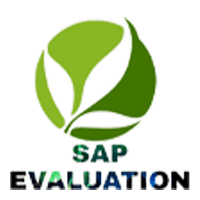Introduction: Shedding Light on Substance Abuse and the Need for Effective Treatment
Substance abuse, whether it’s alcohol, drugs, or prescription medications, is a pervasive issue that affects millions of people worldwide. It not only leads to adverse health effects but also has significant social and economic implications. This necessitates the need for effective treatment, which comes in the form of SAP Program. Designers structure these Programs to assist individuals battling addiction, guiding them to overcome their dependence on harmful substances and lead healthier, more fulfilling lives.
The first step in any SAP Program is an assessment or evaluation. This involves a comprehensive review of the individual’s substance use history, physical health, mental health, and social circumstances. The goal is to understand the extent of the person’s substance use disorder and any co-occurring disorders. Addiction professionals use a variety of substance abuse screening tools to gather this information. Based on the assessment’s findings, addiction professionals develop a personalized treatment plan that outlines the types of treatment most beneficial for the individual.
Detoxification: Removing Harmful Substances from the Body in a Safe and Controlled Environment
Detoxification, commonly referred to as detox, is another critical component of substance abuse treatment. This process involves removing harmful substances from the body, which can cause withdrawal symptoms. Because withdrawal can be severe and potentially dangerous, detox should always occur under medical supervision. Drug detoxification and alcohol detox programs provide a safe and controlled environment where withdrawal symptoms can be managed effectively.
Therapy Approaches: Exploring Various Techniques to Address Underlying Issues and Promote Recovery
After completing detox, the individual typically moves into the next phase of treatment, which involves therapy. Therapists can use various approaches to address the underlying issues contributing to substance abuse, including cognitive-behavioral therapy (CBT) and motivational interviewing (MI). Individuals often find group therapy sessions beneficial because they provide an opportunity to share experiences and learn from others facing similar challenges. The treatment plan may also incorporate family therapy, which aids in repairing damaged relationships and establishing a supportive environment for recovery.
Evidence-Based Interventions: Understanding the Role of Medications in Substance Abuse Treatment
In some cases, medications may be used as part of the treatment plan. Evidence-based interventions like medication-assisted treatment (MAT) and opioid replacement therapy (ORT) can be highly effective in managing cravings and reducing the risk of relapse. It’s important to note that while these treatments can be beneficial, they should always be used in conjunction with therapy and other forms of treatment. Pharmacotherapy for addiction treatment is not a standalone solution but rather one component of a comprehensive treatment approach.
Aftercare and Support: Establishing a Solid Foundation for Long-Term Recovery through Continued Care and Relapse Prevention Strategies
The final phase of substance abuse treatment is aftercare and support. This involves ongoing counseling services, participation in sobriety support groups, and implementation of relapse prevention techniques. These elements are crucial for maintaining sobriety and promoting long-term recovery. Aftercare programs provide individuals with the tools and resources they need to manage their recovery effectively and avoid relapse.
Conclusion: Embracing Hope and Sobriety in the Journey Towards Overcoming Substance Abuse
Overcoming substance abuse is a journey that requires commitment, perseverance, and support. Effective drug misuse programs can provide people with the knowledge and self-assurance they need to adopt a sober lifestyle. While the road to recovery may be challenging, the rewards of leading a healthy, substance-free life are immeasurable. By understanding how SAP Program work, we can better support those on their journey towards recovery and foster a greater sense of hope and understanding around this critical issue.
Frequently Asked Question
-
What is a DOT SAP program?
The DOT Substance Abuse Professional (SAP) program is a service under the Department of Transportation (DOT) regulations. A SAP’s role involves evaluating employees who have violated DOT drug and alcohol regulations, providing treatment recommendations, and overseeing the return-to-duty process. This includes the initial assessment, treatment plan development, follow-up testing, and aftercare.
-
How much does a DOT SAP cost?
The cost for a DOT SAP evaluation can vary widely depending on the professional and the region. However, it’s important to note that the SAP evaluation, treatment, and follow-up testing are typically at the expense of the employee. According to NAADAC, the initial qualification cost for SAPs is $325 for members and $450 for non-members.
-
How long does it take to complete the DOT SAP program?
The duration of the DOT SAP program depends on several factors including the nature of the violation, the specific treatment recommendations made by the SAP, and the individual’s progress through treatment and recovery. After a violation, the individual must complete an initial evaluation, a course of treatment or education as recommended by the SAP, and a follow-up evaluation. Only then can the individual be considered for a return-to-duty test.
-
How do I become a DOT SAP Qualified?
To become a DOT-qualified SAP, an individual must have certain prerequisite credentials in the field of addiction, such as being a licensed physician, a licensed or certified social worker, a licensed or certified psychologist, or an addiction counselor. After meeting these prerequisites, the individual must complete a SAP training course and pass a SAP examination. These courses and exams are offered by various organizations, including NAADAC.


